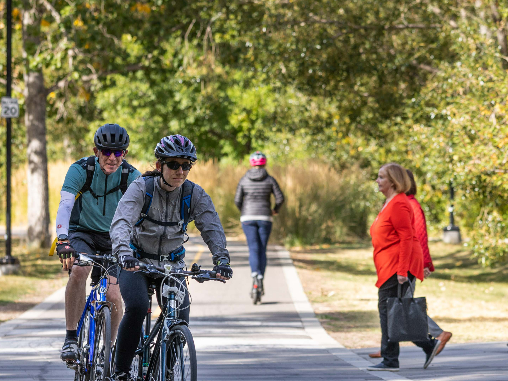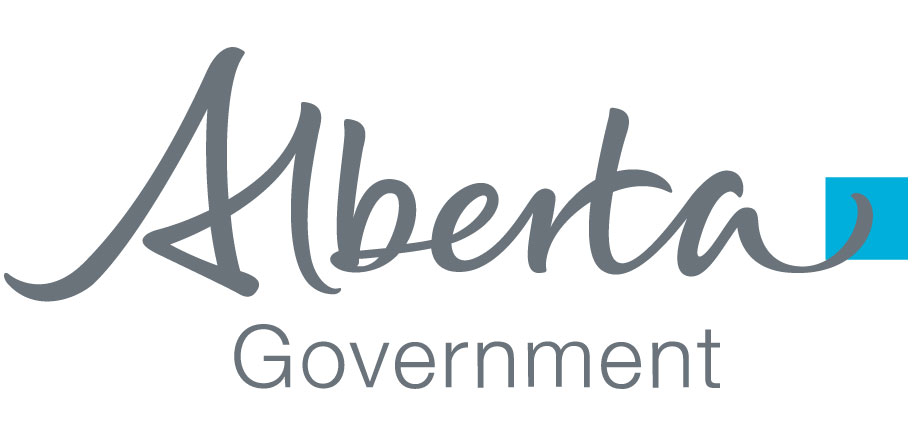Environmental protection
As the largest infrastructure project in Calgary’s history, building the Green Line requires careful consideration of the environment within the project boundaries.
Environmental studies
Prior to main construction, dozens of studies have been completed to identify or investigate environmentally sensitive areas.
| Study type | Description |
|---|---|
| Soil quality |
Test soil quality to inform how it will be managed during construction. Boreholes drilled along the Green Line provided soil samples that were studied to determine soil and bedrock conditions and contamination levels. |
| Groundwater quality |
Test groundwater quality to inform how it will be managed during construction. Groundwater monitoring wells installed along the Green Line provided groundwater samples that were tested to determine conditions and contamination levels. |
| Biophysical impact assessments (wildlife and plants) | Assess and evaluate potential impacts on vegetation, wildlife, and wildlife habitat. |
| Fish habitat | Identify fish species and breeding areas near the Green Line crossings over the Bow and Elbow Rivers. |
| Wetland assessments | Identify and classify wetland areas along the Green Line. |
| Tree inventories |
Identify and classify trees along the Green Line to prevent damage to trees during construction. |
| Historical resources | Identify historical buildings and areas with potential archaeological, paleontological, and Indigenous significance near the Green Line. |
| Noise and vibrations baseline assessments | Measure the current noise and vibrations along the Green Line to inform mitigation measures such as noise walls. |
| Hazardous building materials assessments | Survey building interiors prior to demolition for hazardous materials such as asbestos, lead, mercury, and mold. These materials need to be specially handled and removed prior to demolition. |
| Bat habitat | Survey buildings prior to demolition for potential bat habitats. |
Environment management system (EMS)
After completing the environmental studies as part of the planning stage, information from those studies was used to inform the design and plans for the Green Line. The next step is to create the EMS, which is a framework designed to help identify, assess, manage, monitor and mitigate environmental impacts associated with the project.
Environmental management plans
Environmental management plans inform the construction methods we will use, and how we’ll protect sensitive areas.
Management plans are in place for the following:
- Soil
- Water
- Aquatics
- Vegetation
- Wildlife
- Air quality
- Pests
- Habitat restoration and rehabilitation
- Erosion and sediment control
- Historical resources
- Construction noise and vibration
- Environmental incidents
- Hazardous substance and hazardous waste
- Non-hazardous waste
Green Line won the Best Environment Management Program award through Canada’s Safest Employers Awards for 2024.
This award recognizes excellence in environmental protection in concordance with health and safety management.

Did you know...
- Over 500 individual trees have been identified along the route. The most common species are Balsam poplar, Colorado spruce, Green ash, and Manitoba maple.
- There are nine species of bats in Alberta – six species hibernate over winter and three species migrate south. Prior to demolition, buildings must be checked for hibernating bats and for areas where migrating bats might stop.
- In the areas near Green Line water crossings, 23 different fish species have been documented in the Bow River and 12 different species in the Elbow River.
- Two snake species, eight mammal species, and 43 bird species have been documented within the region of the Green Line.
- Over 800 boreholes and test pits have been drilled since 2014 to analyze soil, bedrock, and groundwater conditions. If we combined all the boreholes, which are up to 40m deep each, it would total 32km deep.




